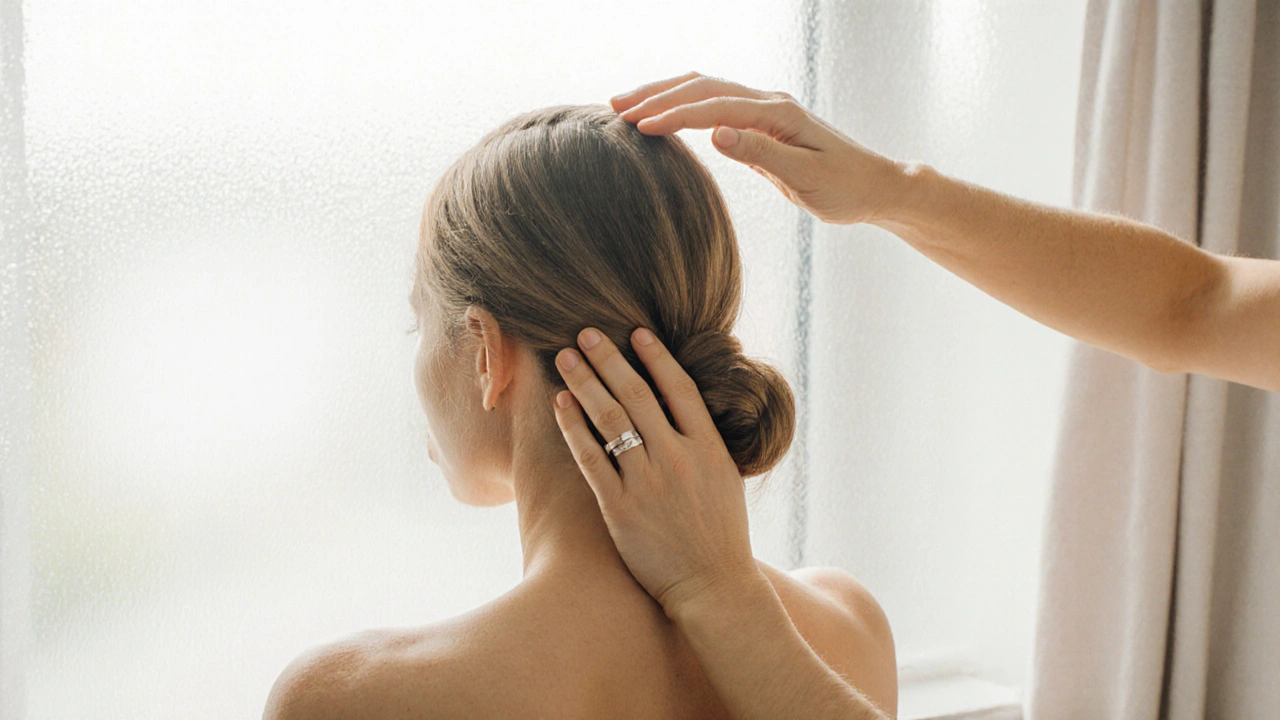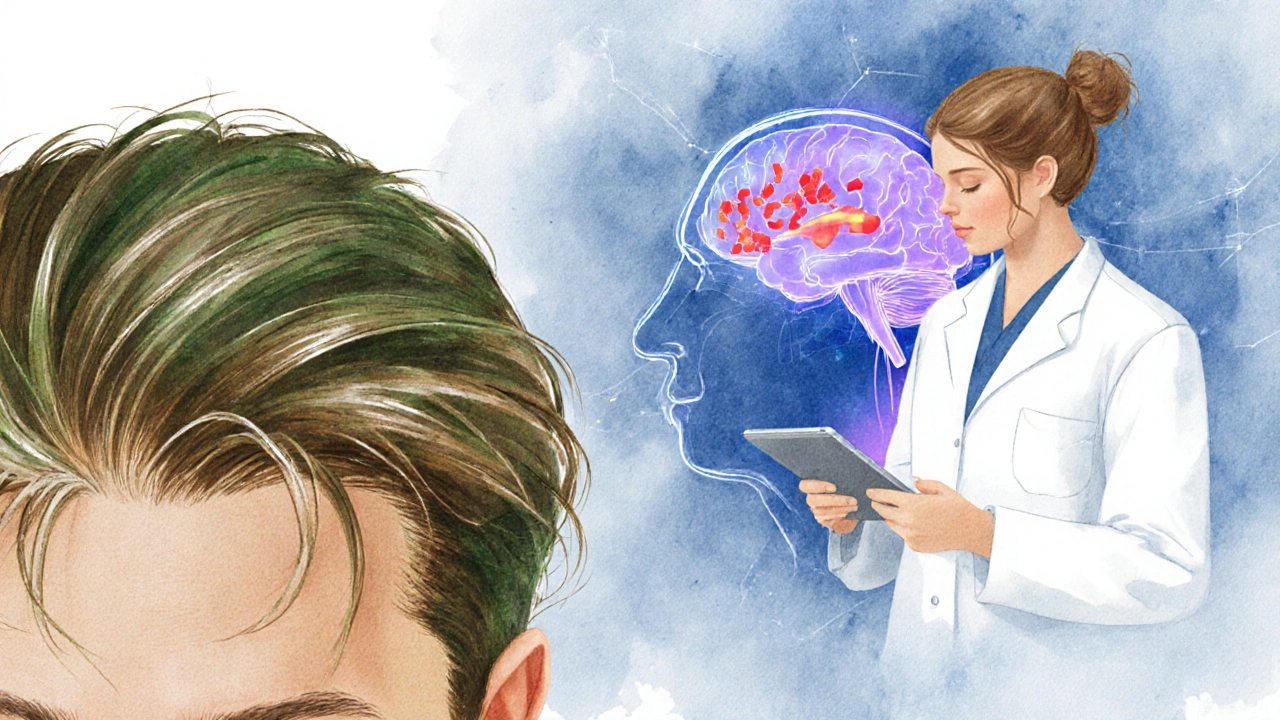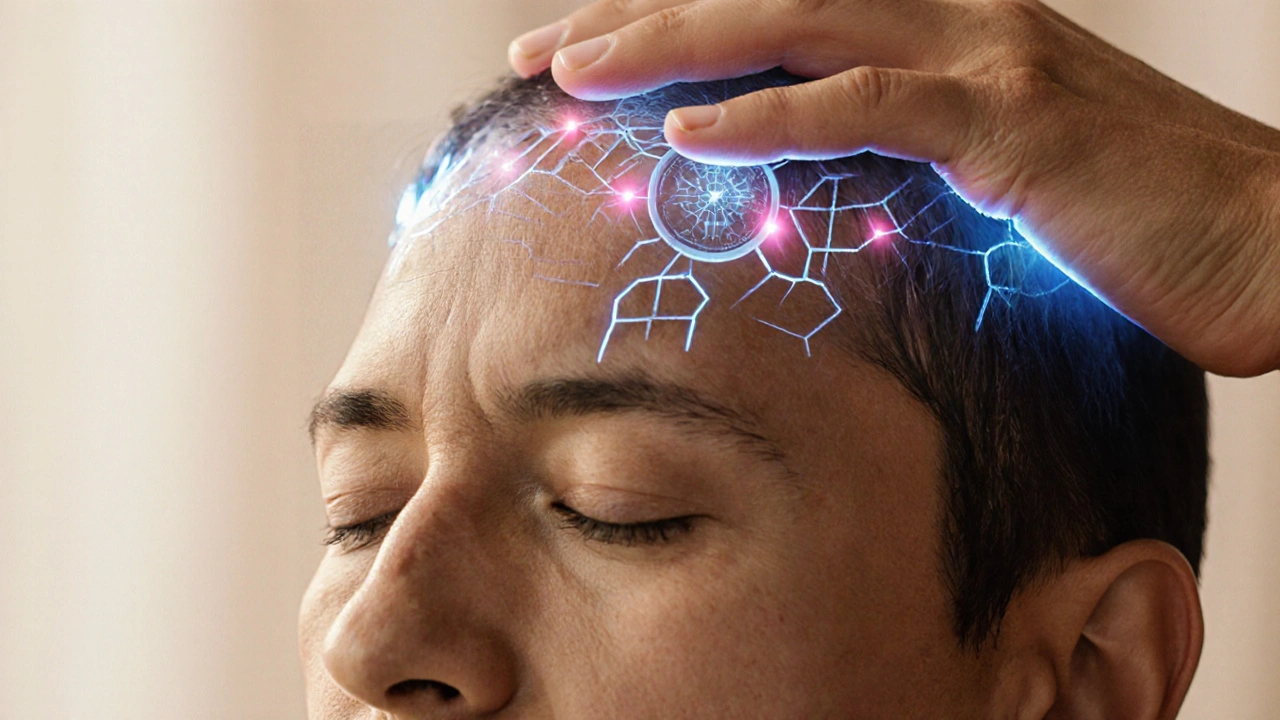Scalp Massage Timer & Guide
Your Personal Scalp Massage Guide
Follow the precise timing recommended in the article for optimal benefits.
Rub fingertips together for 5 seconds to activate circulation.
Apply light pressure in small circles at hairline for 30 seconds.
Move to the crown area and continue circular motions for 1 minute.
Switch to the opposite side and repeat the same pattern for 1 minute.
Finish by gently tapping the entire scalp for 15 seconds.
If you’ve ever wondered why a quick rub on your temples feels so good, you’re not alone. The head and scalp massage is more than a feel‑good trick - it’s a low‑cost, low‑tech habit that can boost hair health, calm the nervous system, and even improve circulation. Below we break down the science, walk you through a simple routine, and share tips to avoid common pitfalls.
Why It Works: The Body’s Hidden Connections
When you start a scalp massage, you’re actually nudging several physiological processes at once. Let’s meet the key players.
Blood Circulation is a the flow of blood through vessels that delivers oxygen and nutrients to tissues and removes waste. Gentle pressure on the scalp expands tiny capillaries, allowing more oxygen‑rich blood to reach hair follicles.
Stress Hormones are chemical messengers like cortisol that rise in response to perceived threats. A calming massage triggers the parasympathetic nervous system, lowering cortisol levels and reducing the “fight‑or‑flight” spike that can interrupt hair growth cycles.
Lymphatic Drainage refers to the movement of lymph fluid that clears out cellular waste and immune cells. The scalp’s dense network of lymph vessels benefits from the gentle push‑and‑pull of massage, helping to clear debris that might clog follicles.
Hair Follicle Health describes the condition of the tiny structures in the skin that produce hair strands. Better circulation and lower stress keep these follicles in the growth (anagen) phase longer.
Research also points to the Endocannabinoid System as a signaling system that helps regulate mood, pain, and inflammation. Massage stimulates receptors that release endocannabinoids, contributing to a sense of wellbeing and reduced inflammation around the scalp.
Finally, Mental Clarity means the sharpened focus and reduced mental fog that follows relaxation. By lowering cortisol and boosting circulation, you also give your brain a fresh supply of oxygen, which can improve concentration.
Step‑by‑Step: How to Give Yourself an Effective Scalp Massage
- Start with clean, dry hair. If you’ve just showered, towel‑dry completely to avoid slipping.
- Warm your fingertips by rubbing them together for a few seconds.
- Place your fingers at the hairline on one side. Apply light pressure and move in small circles (about 1‑inch diameter) for 30 seconds.
- Slide down toward the crown, maintaining the same circular motion. Spend another minute covering the top of the head.
- Switch to the opposite side and repeat the same pattern.
- Finish by using your fingertips to gently tap the entire scalp for 15 seconds. This “tapping” stimulates the lymphatic vessels.
Each session should last 3‑5 minutes. Consistency matters more than length, so aim for a daily routine or at least three times a week.
Tools, Oils, and Add‑Ons
While your hands are the primary tool, a few extras can boost results.
- Lightweight oils such as jojoba, grapeseed, or fractionated coconut help the fingers glide smoothly and add nourishment. Use 2‑3 drops, rub between palms, then proceed.
- Scalp brushes with soft silicone bristles can be used after the massage to distribute oil evenly and stimulate tiny nerve endings.
- Essential oils like rosemary or peppermint have been linked to improved hair density. Dilute 1‑2 drops in a carrier oil before use.
Remember, less is more. Over‑oiling can clog pores and actually hinder hair growth.

How Often Should You Massage?
Research on frequency is still emerging, but most dermatologists recommend 3‑4 times per week for noticeable hair‑growth benefits. For pure stress relief, even a brief 2‑minute session each evening can lower cortisol enough to improve sleep quality.
Watch for signs of over‑stimulation: persistent soreness, redness, or scalp irritation. If you notice any, scale back to once every other day and keep the pressure light.
The Science Behind the Claims
A 2022 study published in the *Journal of Cosmetic Dermatology* examined 60 participants who performed a 5‑minute scalp massage daily for 24 weeks. The group showed a 12% increase in hair thickness compared to a control group, attributed to enhanced blood flow measured via Doppler imaging.
Another 2021 pilot trial on stress biomarkers found cortisol levels dropped by 15% after a four‑week regimen of 10‑minute scalp massages, while participants reported higher scores on the Perceived Stress Scale.
While the sample sizes are modest, the trends line up with what physiologists know about massage: it triggers mechanoreceptors, releases endorphins, and improves microcirculation.
Common Mistakes and How to Fix Them
- Using too much pressure. Pressing hard can damage hair shafts and irritate the skin. Aim for a pressure that feels like a gentle massage, similar to a light handshake.
- Skipping the warm‑up. Cold fingertips reduce blood flow. Warm them first to activate circulation.
- Massaging wet hair with strong force. Wet hair is more fragile; keep movements light or wait until hair is dry.
- Neglecting the temples and occipital ridge. These areas are rich in nerve endings and benefit greatly from stimulation.

Quick Checklist: Your Daily Scalp Massage Routine
| Step | Action | Time |
|---|---|---|
| 1 | Warm fingertips | 5seconds |
| 2 | Circle hairline (left) | 30seconds |
| 3 | Circle crown | 1minute |
| 4 | Repeat on right side | 1minute |
| 5 | Light tapping across scalp | 15seconds |
Frequently Asked Questions
Frequently Asked Questions
Can scalp massage actually grow new hair?
Yes, when done consistently it can lengthen the anagen phase of hair follicles, leading to thicker strands and, for some people, new growth. The key is improved blood flow and reduced cortisol, which together create a more fertile environment for hair.
Is it safe to use essential oils on the scalp?
Essential oils are safe when diluted 1‑2 drops in a carrier oil. Undiluted oils can cause irritation, especially on sensitive skin.
How long before I see results?
Most people notice reduced stress within a week. Visible changes in hair thickness typically appear after 3‑4months of regular massage.
Can I combine scalp massage with other hair‑care treatments?
Absolutely. Massage can enhance the absorption of topical treatments like minoxidil or serums, making them more effective.
Should I massage if I have a scalp condition like psoriasis?
Proceed with caution. Gentle, short sessions are usually fine, but avoid aggressive pressure that could flare up the condition. Consult a dermatologist first.


 Health and Wellness
Health and Wellness